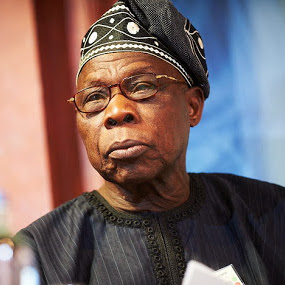News
Let's Not Talk About Agriculture, but Agribusiness
Two questions determine the course for African economic growth in the future: where will burgeoning populations find jobs, and which industries will remain or emerge to provide them?

Former President of Nigeria; Chairman and Advisory Board Member Emeritus, The Brenthurst Foundation

Director, The Brenthurst Foundation

Former Researcher, The Brenthurst Foundation

Two questions determine the course for African economic growth in the future: where will burgeoning populations find jobs, and which industries will remain or emerge to provide them? From what we know now, it is likely that food production and processing will grow in importance. Could clever adoption of localised technology turn Africa into its own breadbasket, and provide a bridge from agriculture to agribusiness?
Africa’s demographic changes and pressures are immense.
Over the next generation the continent is projected to double its population to 2.5 billion. Jobs, already at a premium, will depend on Africa creating more opportunities, by training its people with more than just rudimentary skills, providing necessary infrastructure, and creating an attractive value proposition to investors.
Already un- and under- or self-employment in Africa is over 80%. With 70% of employed youth qualifying as “working poor”, the problem is particularly pronounced among Africa’s young, who comprise more than 60% of the continent’s population.
This is not going to be made any easier by the impact of technology, which is likely to lead to the loss of some (traditional) jobs while inventing new ones. For example, robots, remote sensing and machine learning will change our lives as they shift from being manual and repetitive to cognitive and non-repetitive.
How exactly this will play out is of course uncertain, and itself subject to change from events we can today discern (like climate change) or some we can’t yet identify.
But it is likely that competitiveness will be needed to thrive, within and between societies, and between men and women. If they position themselves correctly, less developed countries may be able to leapfrog technologies in robotics just as happened with digital mobile technologies. The transfer and origins of wealth may also change dramatically, as is hinted by Bitcoin and blockchain technology.
The future may or may not be bleak, but it is unlikely to look like what it used to be.
Thirty of 49 sub-Saharan African countries are net food importers, despite the continent having 400 million hectares of arable land, the greatest store worldwide. Africa’s annual food import bill is $35-billion, and expected to rise to $110-billion by 2025. Exports are worth 65% the value of imports, resulting in a trade deficit of $22-billion on food and agricultural products.
But if there is one word to sum up Africa’s failure to feed itself – its yield.
Especially with smallholders, these are too low to create a virtuous cycle of farming, profit, investment in personal education and healthcare, further improved yields, and more profit.
This relates to an absence of certainty around title, insufficient access to financing, and the relative absence of technology and mechanisation – all of this reflecting, overall, a lack of skills, systems and investment. These challenges are disconcertingly intertwined, with tenure insecurity preventing collateralisation which in turn limits access to finance.
Weak infrastructure (such as roads, warehouses, internet and processing facilities) limit access to markets, which constrains competitiveness. Lack of skills means that technologies which could lead to improved yields are not taken up. Any solution aimed at addressing Africa’s low yields should aim to be holistic and multifaceted.
A grocery list of components to solve Africa’s agriculture yield problem includes:
- First, the imperative to drive economies of scale allowing for a higher level of efficiency.
- A second is the appropriate technology, grounded in scientific research.
- Third, for technology to thrive, a VC-ecosystem which ensures funding and support to entrepreneurs.
- Fourth, policies which support farmers, smallholders in particular, through secure land rights, training and subsidies to promote the adoption of yield-improving technologies.
- Fifth, microfinance and insurance for farmers to de-risk the process of adaption to new technologies, and sixth, a healthy dose of good stories and the ability to learn from them.
Africa needs technological solutions developed for the African context, not simply imported from elsewhere. Often, when the seemingly “right” technologies are not taken up by smallholders, it is said that they are unable to adapt due to lack of skills, or internet access. The converse is striking: if the technologies are not adopted, they are probably not the right technologies for the context.
Since technological solutions exist to most problems, the challenge is twofold: Ensuring the governance and ownership issues that stand in the way of its adoption are removed and also changing the incentives – for example, that if African farmers produce more that the means exist for them to profit from this, to get the surplus to market at a fair price.
Some have begun to address this challenge, by bringing subsistence farmers who produce surpluses into the economy. These include Khula (South Africa), connecting smallholders with local markets, WeFarm (Kenya), a peer-to-peer knowledge sharing platform for smallholders, and Wala (Uganda), which provides loans to smallholders through crypto-payments. Nigeria’s FarmCrowdy allows mobile investing in smallholder farmers from private investors both locally and abroad.
In 2017, 159 African start-ups collectively attracted funding of over $195-million. This figure is dwarfed by the $12-billion invested in European start-ups, and more than $70-billion in the US for the same year. Africa’s start-up ecosystem, although growing, remains relatively weak. African entrepreneurs face some of the toughest business conditions in the world. This is the result of inefficient bureaucratic processes, limited access to funding, and weak patent laws and IP protection. Scaling is limited by small and heterogeneous markets, with the result that businesses in sub-Saharan Africa are on average 24% smaller than in other parts of the world, and less productive.
If we are to develop localised, bespoke, high-tech solutions to the challenges outlined above, developing the right African VC climate will be key.

This requires yet another grocery list. The components of a healthy VC ecosystem are government support (to kick-start the funding process, and provide infrastructure and the appropriate legal framework for patent protection); an active start-up market with regular investments, entries and exists; academia for research and development; and finally, incubators and accelerators to support young start-ups.
There are today 442 active tech hubs on the continent, the large majority in either Lagos, Cape Town or Nairobi. This figure has grown by 50% since 2016, with 47 African countries now boasting at least one hub. While the supply of tech-accelerators and start-ups themselves is clearly growing, the available funding seems to be slow to keep up. This is where both government and the private sector have an important role to play.
With Africa’s food market projected to be worth over $1-trillion by 2030, Ag-Tech presents a substantial investment opportunity.
But how do we translate good ideas into practice, and how do we transfer lessons across geographies? It is not sufficient to simply import solutions that have worked elsewhere. Establishing small, regional centres for the development of technologies through interaction with farmers, can provide solutions both agronomically and socio-economically. Perhaps existing tech-hubs can fulfil this role, but more active involvement from academia and government is undoubtedly needed.
The model needs to be changed from “agriculture” to “agribusiness”, as this is the only way to move from subsistence farming to farming for surplus. This is why, for example, smallholder outgrower farming schemes in Malawi and Mozambique around tobacco have prospered, given there is an underlying commercial imperative and system, which does not go away when a donor shifts attention.
Two questions determine the course for African economic growth in the future: where will burgeoning populations find jobs, and which industries will remain or emerge to provide them?
From what we know now, it is likely that food production and processing will grow in importance, as will tourism. The challenge for food and agriculture is to provide mechanisation for greater efficiency without sacrificing labour. Providing the appropriate funding to these start-ups could kill three birds with one stone: ensure the relevance and productivity of the agricultural sector while providing jobs, and bolstering Africa’s food security.
It’s a trend worth betting on.
This article was originally published on The Daily Maverick.
Up next

Tito's Tough Choices
26 Oct 2018
